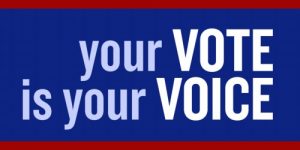(Akiit.com) Bernie Sanders on Sunday tried to attribute most of his losses to Hillary Clinton – his recent string of victories notwithstanding – to poor people not voting.
“Poor people don’t vote,” he said on NBC’s Meet the Press. “I mean, that’s just a fact. That’s a sad reality of American society.”
What’s a fact is that when poor people do vote, they are not voting for Bernie Sanders.
As the Washington Post observed, “Sanders has lost Democratic voters with household incomes below $50,000 by 55 percent to 44 percent to Hillary Clinton across primaries where network exit polls have been conducted.”
He lost to Hillary Clinton 21 percent among voters bringing in more than $100,000 a year and by 9 points among middle income voters, according to the newspaper. 
So if more poor people were voting, if the current trends hold true, Hillary Clinton would be beating Sanders by an even larger margin.
There is no doubt that poor people are far less likely to vote than more affluent citizens. According to the Census Bureau, 47 percent of eligible adults with family incomes of less than $20,000 annually voted in 2012. By contrast, approximately 80 percent of those in families earning $100,000 or more a year voted in 2012. Similar patterns also held true to voter registration.
Sanders said on Meet the Press, “If we can significantly increase voter turnout so that low-income people and working people and young people participated in the political process, if we got a voter turnout of 75 percent, this country would be radically transformed.”
Sanders failed to address why poor people are less likely to vote.
A study for Caltech and MIT reported that people generally failed to vote for a variety of reasons, including dissatisfaction with the choice of candidates, other obligations, transportation problems and registration issues.
Under the headline, “Why Are the Poor and Minorities Less Likely to Vote?,” an article in Atlantic magazine noted, “While income and education levels were not recorded in the survey, race and age were major factors influencing who made it to the polls on Election Day and what kind of barriers they faced. Black and Hispanic citizens, for whom the poverty rate is close to three times that of whites, were three times as likely as whites to not have the requisite I.D. and to have difficulty finding the correct polling place. They were more than three times as likely as whites to not receive a requested absentee ballots, and roughly twice as likely to be out of town on Election Day or to have to wait in long lines.
“They were also substantially more likely than whites to report transportation problems and bad time and location as reasons for not getting to the polls, while white voters were the most likely to cite disapproval of candidate choices. Taken together, the surveys suggest that white citizens who abstain from voting do so primarily by choice, while the majority of minority non-voters face problems along the way.”
And the problems faced along the way are considerable.
According to the Caltech/MIT survey, between 910,000 and 3 million votes were lost in 2008 as a result of registration problems. Another 1.5 million voters said the polling places were poorly run and 1 million reported feeling intimidated at the polls. Of those asked to show a photo ID, 70 percent were Black, 65 percent were Latino and only 51 percent were White, according to the study.
The United States voter turnout consistently trails most developed countries.
According to the Pew Research Center, the U.S. turnout rates in 2012 was 53.6 percent, compared to 87.2 percent in Belgium, 86.4 percent in Turkey, and 82.6 percent in Sweden.
Numerous suggestions have been made to make it easier for Americans to vote, including weekend and online voting, extending voting over several days and making the hours more convenient.
But instead of doing that, many states are moving in the opposite direction.
The Brennan Center for Justice at the New York University School of Law reported 17 states will have new voter restrictions in place for the 2016 presidential election, ranging from strict Photo ID requirements to curtailing voting hours and adding more registration restrictions.
The 17 states are: Alabama, Arizona, Georgia, Indiana, Kansas, Mississippi, Nebraska, New Hampshire, North Carolina, North Dakota, Ohio, Rhode Island, South Carolina, Tennessee, Texas, Virginia and Wisconsin.
A survey by the Brennan Center found:
- Seven of the 11 states with the highest Black turnout in 2008 have new voter restrictions in place;
- Eight of the 12 state where Latino population growth was greatest from 2000 to 2010 passed laws making it harder to vote;
- Blacks were four times more likely than Whites to stand in voting lines for more than 30 minutes;
- Latinos were six times more likely than Whites to stand in voting lines more than 30 minutes and
- Voters in precincts in Florida, Maryland and South Carolina with higher percentages of voters of color have fewer voting machines.
It’s not easy being poor in this country. And, by design, we seem to be doing very little to increase the number of poor people voting.
Columnist; George Curry
Official website; http://twitter.com/currygeorge









Leave a Reply